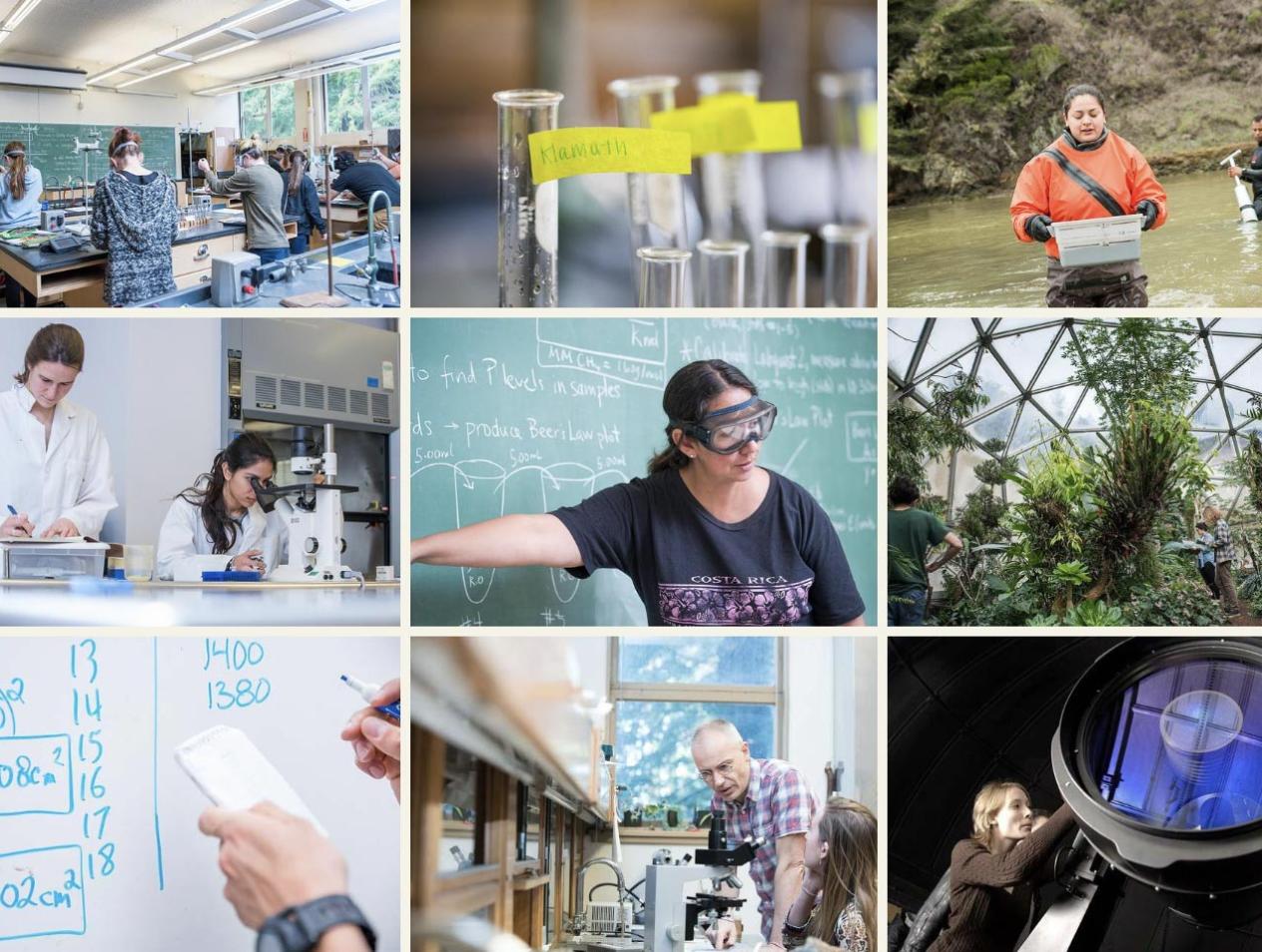Breadcrumb
Achievements
Find out what our students, faculty, and staff are being recognized for.
Erin J. Hanson and Dr. Jose R. Marin Jarrin
Fisheries Biology
Erin J. Hanson and Dr. Jose R. Marin Jarrin published the peer-reviewed paper “List of Fish Species Present in Galápagos, Ecuador, and California, U.S.A., With Notes on Their Commercial Importance and Conservation Status” in the newly released ideaFest Journal. https://digitalcommons.humboldt.edu/ideafest/
Louis Antonelli, Alexandra Winkler, Theron Taylow, and Natalie Greenleaf
Fisheries Biology
Louis Antonelli, Alexandra Winkler, Theron Taylow, and Natalie Greenleaf published the peer-reviewed paper ”Variation in Coastal Macroinvertebrate Species Diversity on Intertidal Boulders in Trinidad, California” in the newly released ideaFest Journal. https://digitalcommons.humboldt.edu/ideafest/
Jasmine Williamshen, Alison O'Dowd, Kyle De Juilio, Nicholas Som, Darren Ward, Brian Williamshen
Environmental Science & Management
Former ESM graduate student Jasmine Williamshen and co-authors Alison O'Dowd (ESM professor), Kyle De Juilio (Yurok Tribe Fisheries Program), Nicholas Som (USFWS), Darren Ward (Fisheries professor) and Brian Williamshen (UC Davis) published a paper entitled, "Restoration pulse flows from a California dam temporarily increase drifting invertebrate biomass concentration" in the Journal of Environmental Management (https://www.sciencedirect.com/science/article/pii/S0301479722022204).
Micaela Szykman Gunther, Ho Yi Wan
Wildlife
Drs. Micaela Szykman Gunther and Ho Yi Wan received a $170,000 grant from the National Council for Air and Stream Improvement (NCASI) to support a distribution study on the marten and fisher, two closely related members of the weasel family that are both species of special concern. The project aims to assess potential shifts in the species’ distributions after wildfires in Lassen County, and will support two Department of Wildlife graduate students. Findings will determine if certain management strategies or habitat types are more resilient to fire, potentially serving as refugia for martens and fishers.
Pedro Peloso
Biological Sciences
Research Associate Dr. Pedro Peloso and collaborators have discovered and described a new species of frog from South America (Brazil and French Guiana). They revealed this discovery in a paper titled "A new Chiasmocleis (Anura: Microhylidae) from the eastern Guiana Shield with an amended definition of C. haddadi", published in the Journal Zootaxa.
Bonnie Ludka, Adam Young, Robert Guza, William O’Reilly, Mark Merrifield
Environmental Resources Engineering
Dr. Bonnie Ludka and colleagues have published a paper in Coastal Engineering titled "Alongshore variability of a southern California beach, before and after nourishment." Their work investigates the link between wave-driven alongshore currents and hotspots of beach erosion and accretion on a southern California beach. Additionally, they analyze the effectiveness (both positive and negative impacts) of beach nourishment as a coastal management technique to manage the hotspots. The influence of alongshore sand transport on the migration and closure of a nearby river mouth is also discussed.
Frank Juma Ong'ondo, Frank Fogarty III, Peter Njoroge, and Matt Johnson
Wildlife
Wildlife graduate student Frank Juma Ong'ondo and his collaborators Drs. Frank Fogarty and Matt Johnson from Humboldt Wildlife, and Dr. Peter Njoroge from the National Museums of Kenya published a paper entitled "Bird abundance and diversity in shade coffee and natural forest in Kenya" in the journal Global Ecology & Conservation. Open access link here.
Dr. Oscar M. Vargas-Hernandez
Biological Sciences
Assistant Professor Dr. Oscar Vargas and collaborators published a paper titled "Evolutionary history constrains heat tolerance of native and exotic tropical Zingiberales." The paper studies the thermal tolerance of native and wild gingers in Costa Rica, discussing its implications to conservation and the biology of invasive species.
Matt Johnson
Wildlife
Wildlife faculty member Matt Johnson has secured a new grant ($659,987) from the Agricultural Research Institute to investigate the use of nest boxes for bluebirds and swallows for insect pest control in winegrape vineyards. The 3-year project is in collaboration with researchers at UC Davis (Dr. Daniel Karp) and UC Riverside (Drs. Erin Wilson-Rankin and S. Houston Wilson), and it will fund a post-doctoral researcher and multiple undergraduate students from Cal Poly Humboldt, along with a PhD student at UC Davis. The research will occur in Napa Valley.
Brittany D. Light and Robert W. Zoellner
Chemistry
Professor Emeritus Robert W. Zoellner and his former student, Brittany D. Light, have published a "mini-review" entitled "Chemistry with a capital Z: The superheavy elements, Flerovium" in the Summer 2022 issue of The Hexagon of Alpha Chi Sigma: B. D. Light and R. W. Zoellner, The Hexagon of Alpha Chi Sigma, 2022, 113(2), 20-24.






